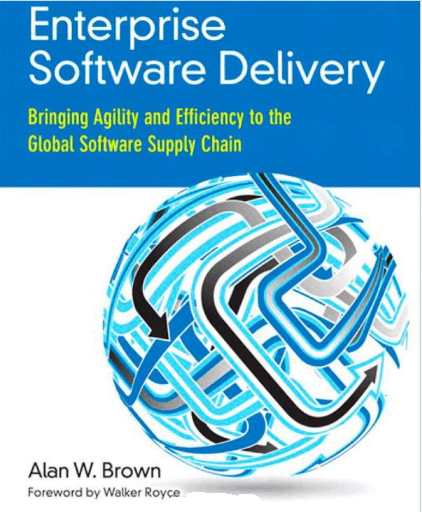| Enterprise Software Delivery |
|
Author: Alan W Brown A book that claims to provide detailed, actionable techniques for building software supply chains. Should you read it?
The subtitle of this book is Bringing Agility and Efficiency to the Global Software Supply Chain. This might put you off on the grounds you’ve not really got big enough to worry about global software delivery, but in fact the book contains some useful insights even if your software delivery problem is much more local. Brown is the Chief Technology Officer for IBM’s Rational Software group in Europe, and he’s been involved with a number of other big-name software companies, which means he really knows the subject area well.
I have to be honest, I started reading this book expecting to be drowned in waffle, but I was pleasantly surprised. While there is a fair proportion of ‘stakeholders’ and ‘organizationally diverse supply chain’ type of material, Brown does make some interesting points. He’s very keen on figures and footnotes, backing up his assertions with references to external sources, which makes the book a little harder to read but alerts you to other sources, some of which are interesting. Brown in also keen on case studies to illustrate his ideas. This would be a useful book to read if you need to get an overview of techniques such as waterfall development or agile development, or just want to know what your manager or directors are talking about. Brown starts by asking why enterprise software delivery is so difficult, dissects a typical software delivery project, then goes in to the parts of the process where it’s possible to improve things. There are chapters on collaborative and agile software delivery, software quality, and governance. The chapter on software quality looks at why big software projects fail, and how the notion of a testing software factory can help. There’s a lot here that’s not relevant to smaller projects, but some of it is useful. The chapter on governance also covers measurement and metrics, and lays out how to set up who is responsible for what aspects, how to manage policies and standards, and how to measure whether your policies and standards are working or not. Two case studies on how Danske Bank and IBM Rational worked to improve software delivery make interesting reading, and the final two chapters look at what lessons can be drawn for successful global enterprise software delivery, and what the future holds. On the whole, I found this book to be based on real life experience, and the author overall talks sense rather than management drivel. He doesn’t claim to have invented a sure-fire way to make impossible things possible, he just lays out what he’s found in his career. The target audience of the book is really CIOs, but it’s an interesting read for those of us at the coal face too.
|

